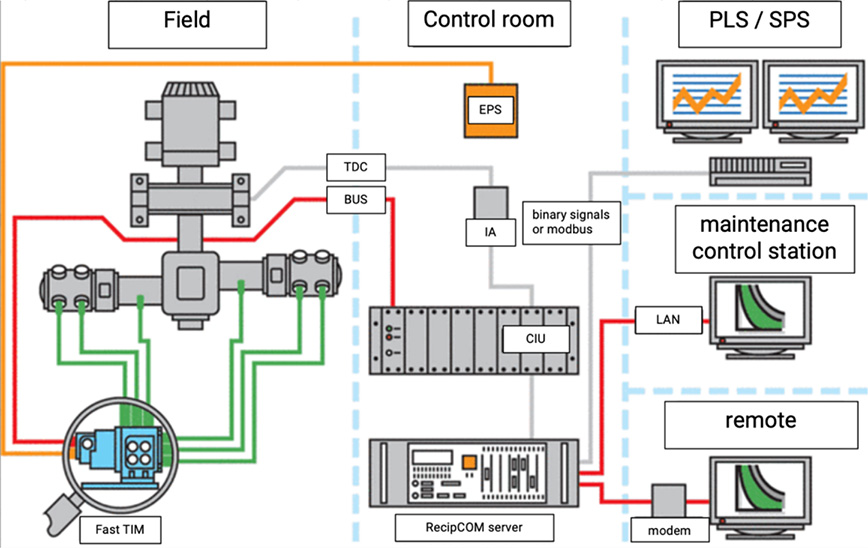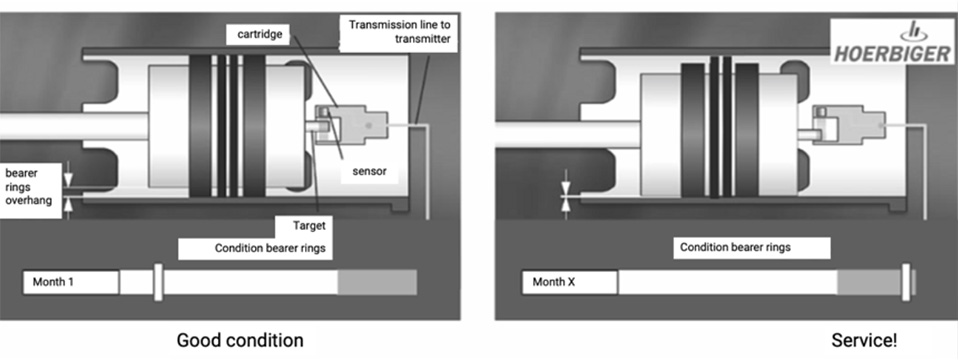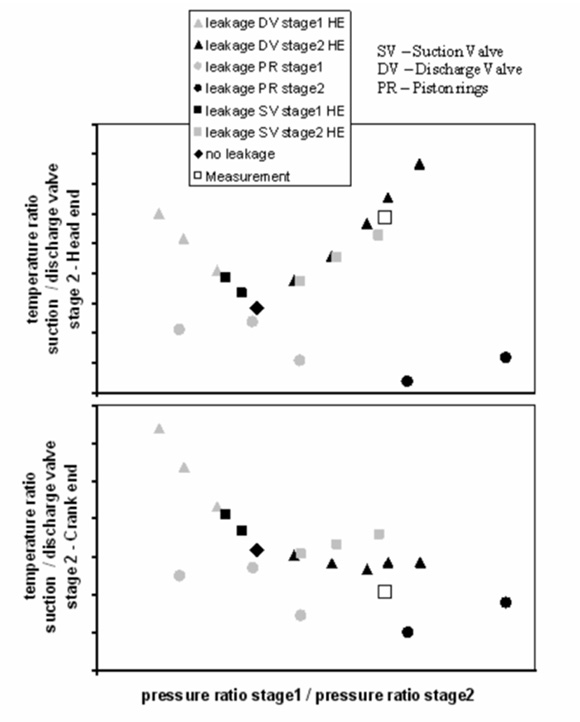Important components of piston compressors are subject to wear which cannot be avoided, and which could lead to a shutdown of the compressor with subsequent loss of production entailing high costs as a consequence.
The manufacturer therefore has to design those components which undergo the highest wear – such as compressor valves, piston rings and pressure packings– in such a way, that service free maintenance intervals of one to three years (8 000 to 25 000 running hours) can be achieved.
The user has to continuously monitor the proper functioning of the compressor in order to avoid breakdowns and personal damage. Knowledge about the present state of wear and its trend makes it possible to plan the necessary service and shutdown times of the plant in advance.
The control system of the compressor installation has to include a condition monitoring system which checks the interstage pressures and temperatures (also perhaps the power input and mechanical vibrations) and compares them within given limits. It can then, if necessary, shut down the plant.
Important compressor stations with a high danger potential are more often fitted with an extensive control and monitoring system. The following examples demonstrate the logical and technical structure of such systems.
The system works in three areas: In the explosion proof field, area sensors are fitted, which convert pressures, temperature and vibrations into electric signals, see Figure 6.8.




